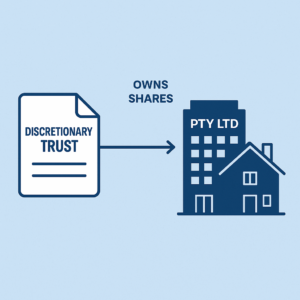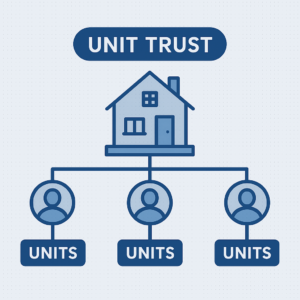Partnership Business Structure in Australia: Complete Guide (With Real-World Examples)
A partnership is one of the most common ways Australians go into business together. It allows two or more people to share profits, responsibilities, and resources under a simple structure — without the complexity of a company.
But not all partnerships are the same. There are different types with different levels of liability, regulation, and suitability for certain ventures. Understanding these distinctions can save you from costly mistakes later.
Let’s explore what a partnership is, how it works, the types recognised in Australia, and when each structure is appropriate — with clear case examples for each.
🤝 What Is a Partnership?
A partnership is an agreement between two or more people (up to 20) to operate a business together and share profits. Each partner:
-
Contributes capital, labour, or expertise
-
Shares in profits and losses
-
Shares in legal responsibility for the business
A partnership is not a separate legal entity, meaning:
-
The partnership doesn’t pay tax — each partner reports their share of income on their personal tax return.
-
Partners have joint and several liability for business debts — if one can’t pay, the others are responsible.
Partnerships in Australia are governed by state and territory legislation such as:
-
Partnership Act 1892 (NSW)
-
Partnership Act 1958 (VIC)
-
Partnership Act 1891 (QLD)
🇦🇺 Types of Partnerships in Australia
There are three primary types of partnerships recognised under Australian law:
-
General Partnership
-
Limited Partnership (LP)
-
Incorporated Limited Partnership (ILP)
Each has its own structure, legal implications, and ideal use cases.
🧾 1. General Partnership
Overview
This is the simplest and most common form of partnership. All partners jointly own and manage the business and share equal responsibility for its debts and obligations.
Key Legal Features
-
Each partner can bind the partnership through contracts or debts.
-
Partners are personally liable for all obligations of the business.
-
Profits and losses are divided as per the partnership agreement (or equally by default).
Tax Treatment
-
Register for an ABN and TFN under the partnership name.
-
Lodge an annual partnership tax return (Form P).
-
Each partner reports their share of profit or loss in their individual tax return.
Example – Family Plumbing Business (General Partnership)
Tom and Lucy, a married couple in Brisbane, both qualified plumbers, decide to start T&L Plumbing Services.
They register a partnership ABN, open a joint business bank account, and split profits 50/50.
Both actively work in the business, so they share management decisions and liability equally.
If the business takes on a $20,000 equipment loan, both are personally liable for the full amount, not just half.
Best Suited For:
-
Family businesses
-
Small service providers (e.g. tradespeople, consultants)
-
Professionals wanting equal participation and simple administration
🏗️ 2. Limited Partnership (LP)
Overview
A Limited Partnership (LP) allows certain partners to invest in the business without being personally liable for its debts beyond their contribution.
This creates a structure suitable for projects that need passive investors.
Key Legal Features
-
At least one General Partner (manages operations, unlimited liability)
-
At least one Limited Partner (investor, limited liability)
-
Must be registered with the state or territory authority (e.g. NSW Fair Trading, Consumer Affairs Victoria)
-
Limited partners cannot manage the business day-to-day — if they do, they lose limited liability.
Tax Treatment
-
Registered with the ATO for ABN and TFN.
-
Taxed as a partnership: income flows through to partners.
-
Some states impose specific filing and disclosure obligations for LPs.
Example – Boutique Property Development (Limited Partnership)
Atlas Developments LP is formed between Atlas Constructions Pty Ltd (the General Partner) and three private investors (Limited Partners).
Atlas manages the development of a small residential complex in Sydney.
The investors contribute $500,000 each but play no role in operations.
If the project runs at a loss, the investors can lose only their $500,000 contribution — not their personal assets.
Atlas, as the general partner, carries the full legal liability.
Best Suited For:
-
Real estate and investment projects
-
Joint ventures seeking capital investors
-
Businesses wanting to separate management from financial backing
💼 3. Incorporated Limited Partnership (ILP)
Overview
An Incorporated Limited Partnership (ILP) is a separate legal entity and the most sophisticated form of partnership.
It’s designed for venture capital funds, private equity, and large-scale investment projects.
Key Legal Features
-
Has its own legal identity, separate from the partners.
-
Must include at least one General Partner (unlimited liability) and one Limited Partner (liability limited to their investment).
-
Registered with a state authority and issued an ABRN (Australian Body Registration Number).
-
Eligible for registration under federal legislation such as the Venture Capital Act 2002 (Cth) for certain tax concessions.
Tax Treatment
-
The ILP itself is not taxed as a company.
-
Income “flows through” to partners, maintaining partnership taxation benefits.
-
Qualifying Venture Capital Limited Partnerships (VCLPs) or Early Stage Venture Capital Limited Partnerships (ESVCLPs) can receive capital gains tax exemptions on eligible investments.
Example – Venture Capital Fund (Incorporated Limited Partnership)
NextWave Ventures ILP is established under Victorian law.
It includes one General Partner, NextWave Management Pty Ltd, and five Limited Partners, all institutional investors.
NextWave invests in early-stage tech startups.
The General Partner manages the portfolio and bears unlimited liability; investors’ exposure is limited to their capital contributions.
The ILP structure allows the fund to access tax concessions under the VCLP scheme, making it ideal for large-scale investment projects.
Best Suited For:
-
Venture capital and private equity funds
-
Large investment syndicates
-
Projects requiring limited investor liability and flow-through tax benefits
⚖️ Partnership Agreement — The Foundation of Every Partnership
A written partnership agreement is essential for all partnership types. It should clearly outline:
-
Ownership shares and capital contributions
-
Profit and loss distribution
-
Decision-making powers
-
Procedures for adding or removing partners
-
Dispute resolution and exit strategies
-
Dissolution terms
Without one, disputes are governed by default provisions in the relevant Partnership Act, which may not reflect your intentions.
🧭 Choosing the Right Partnership Type
| Business Goal | Recommended Structure | Reason |
|---|---|---|
| Two professionals running a shared business | General Partnership | Simple setup, shared control |
| Attracting investors but keeping control | Limited Partnership | Allows passive investment with limited risk |
| Managing an investment or venture capital fund | Incorporated Limited Partnership | Legal entity, tax concessions, investor protection |
⚠️ Risks and Practical Considerations
-
Unlimited liability: General partners can lose personal assets if the business fails.
-
Shared legal exposure: One partner’s actions can bind others.
-
Dissolution risk: A partnership may end automatically if a partner leaves or dies.
-
Tax reporting: Each partner must declare their share of profit/loss accurately.
-
Regulatory oversight: LPs and ILPs must register and maintain compliance with state rules.
💬 Final Thoughts
The partnership structure provides flexibility and cooperation for small and medium Australian businesses — from family-run enterprises to professional practices and investment ventures.
But not all partnerships are equal.
-
Choose a General Partnership for simplicity and control.
-
Choose a Limited Partnership if you need investors without giving up management authority.
-
Choose an Incorporated Limited Partnership for sophisticated, large-scale investments requiring regulatory compliance and tax benefits.
Getting professional advice before forming a partnership helps ensure the structure fits your goals, risk tolerance, and growth plans.
Information current as of October 2025. Reviewed by the Trustify Business Advisory Team. General information only — not financial or legal advice.
Others
-
October 20, 2025 Buying Property Under Your Personal Name in Australia: Pros and Cons
-
October 18, 2025 Service Trust Business Structure in Australia




